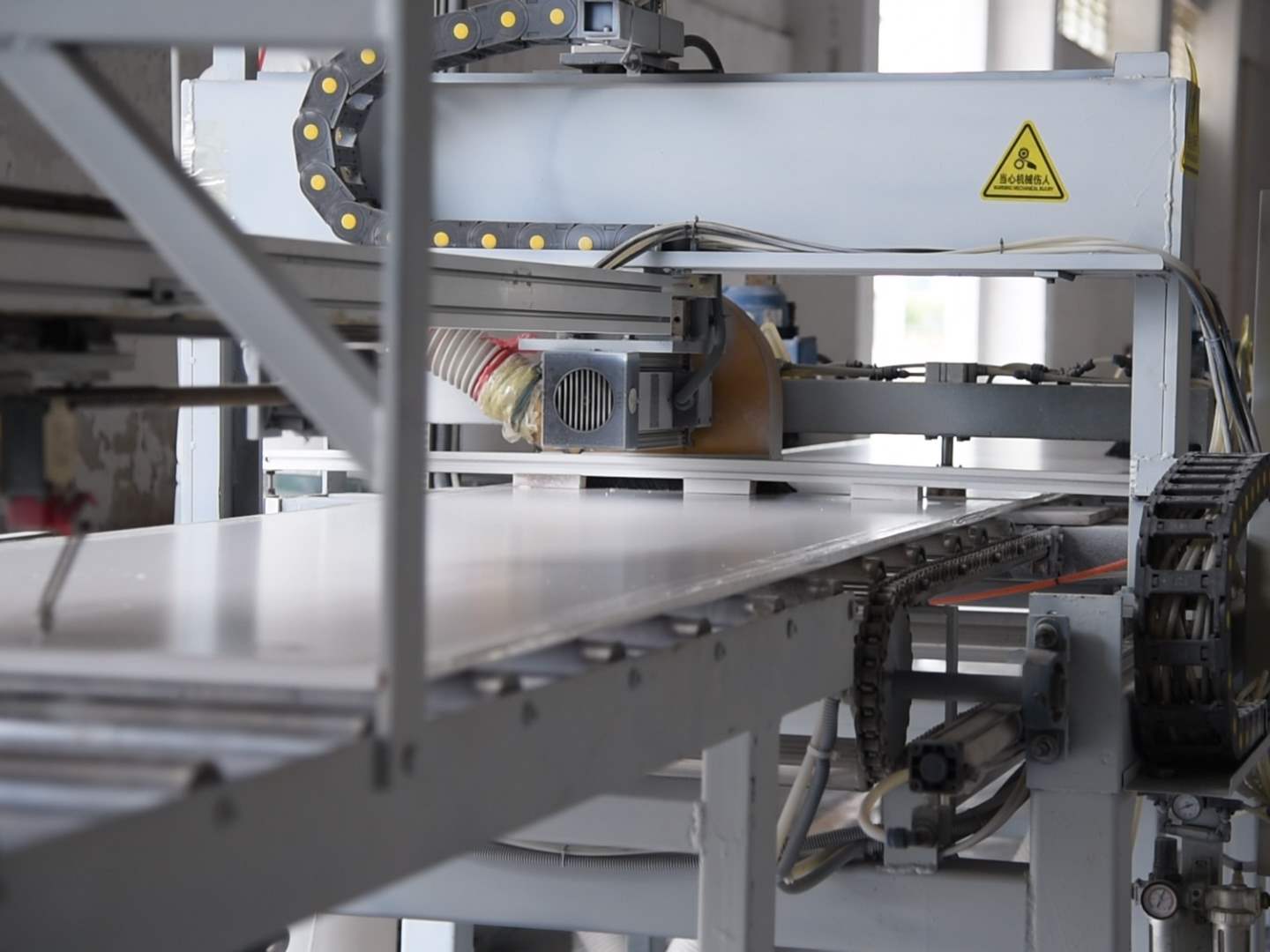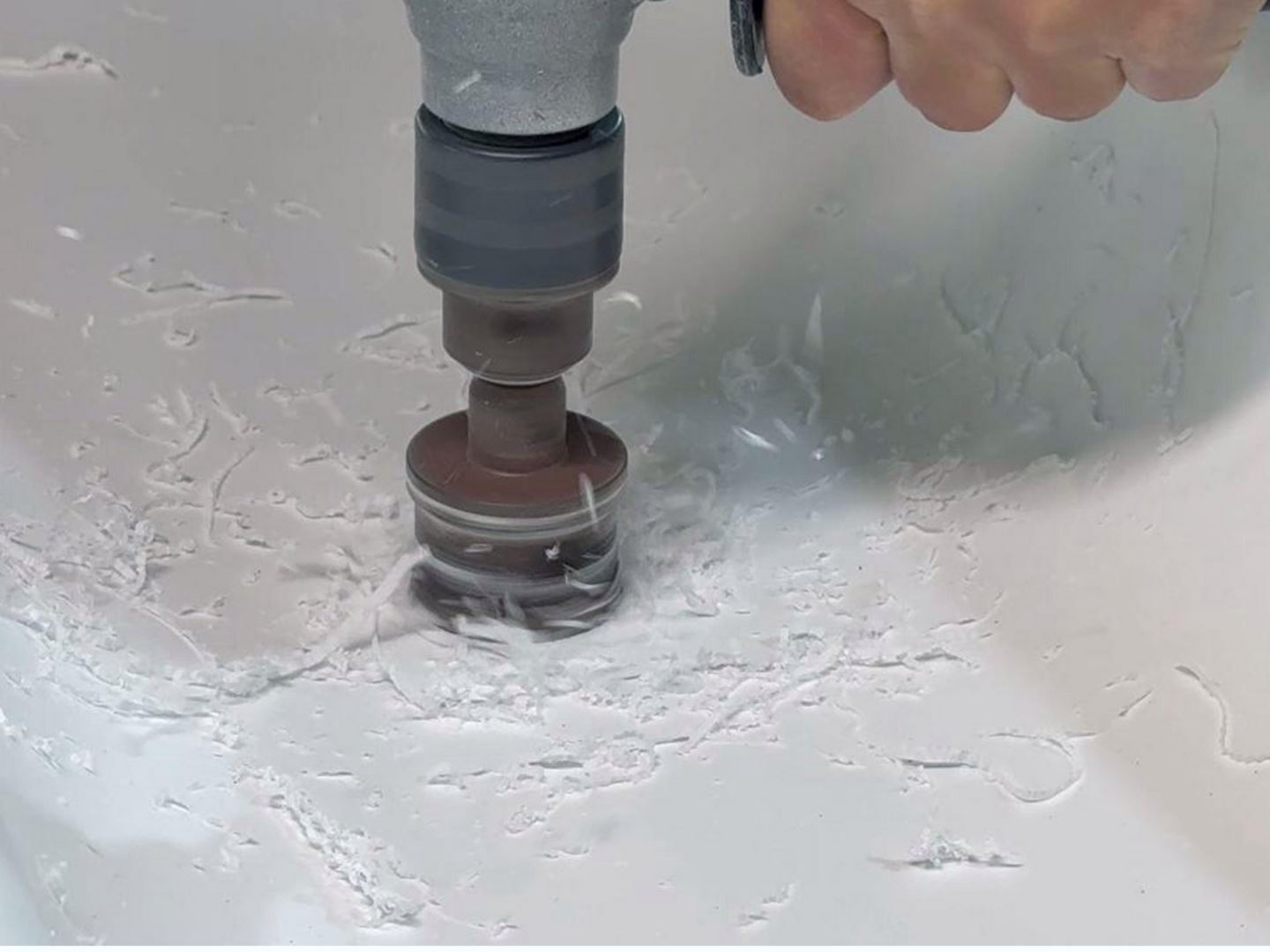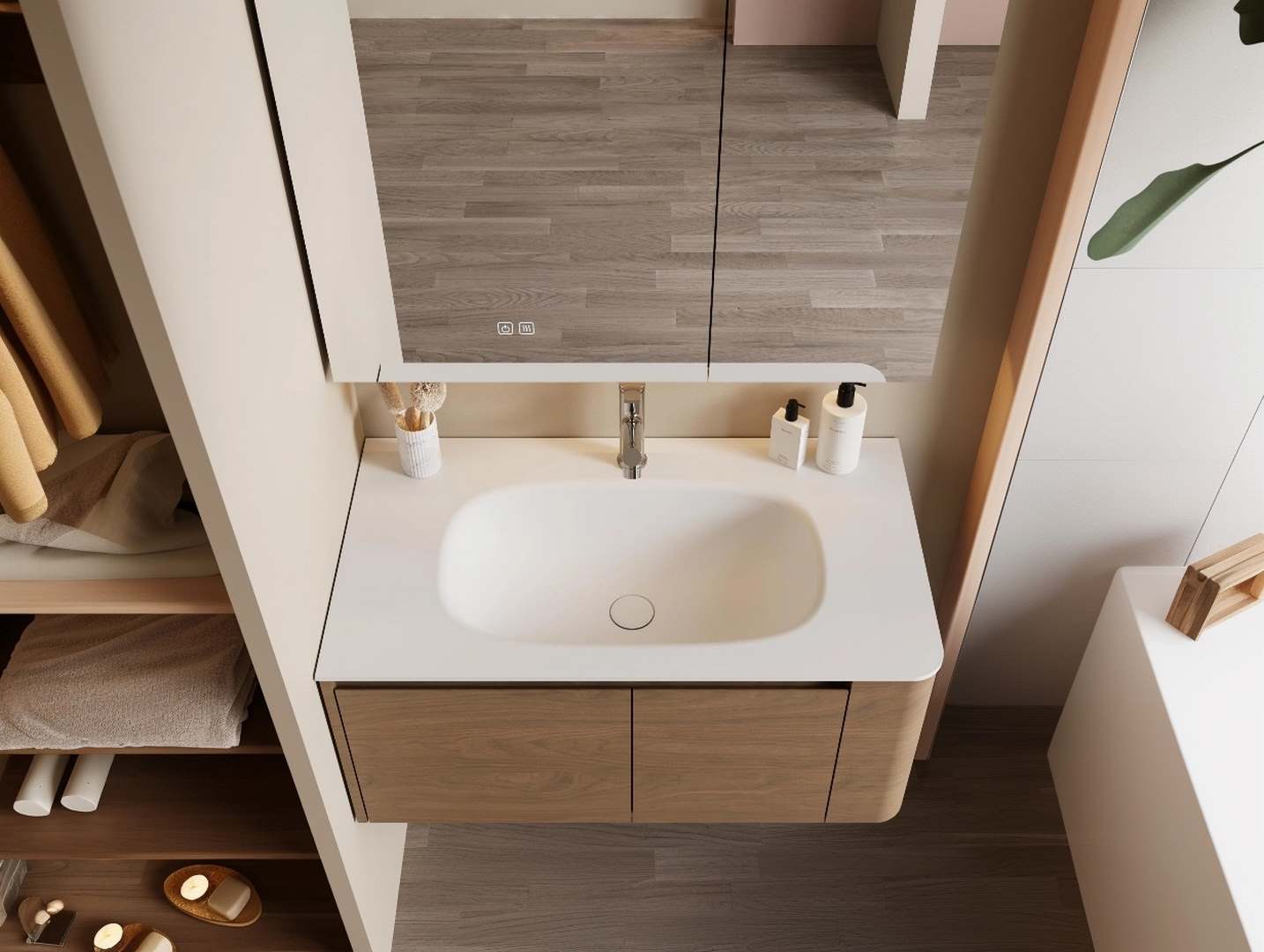15 Essential Steps to Quality and Durability
Introduction
Choosing the right integrated basin production process is key to creating high-quality, durable, and beautiful bathroom fixtures.
At Cpingao, we’re committed to helping you understand each step clearly.
In this article, we’ll walk you through the 15 essential steps—from raw material casting to final packaging—that ensure every solid surface integrated basin meets the highest standards.
Follow along to master the full production journey and make smarter decisions.
Understanding the Integrated Basin Production Process: 15 Key Steps
At Cpingao, the integrated basin production process is a carefully engineered journey that blends craftsmanship, material science, and strict quality control.
From the initial casting to final packaging, every step plays a critical role in ensuring the final product meets the highest standards in both aesthetics and functionality.
Below, we break down the entire 15-step process that defines how our solid surface integrated basins are made.
1. Casting and Molding
The process begins with casting, where skilled workers use a time-controlled curing oven to prepare and pour a precise PMMA + ATH formula.
This environmentally friendly blend is non-toxic, antibacterial, flame-resistant, and easy to maintain. One casting session produces up to 40 sheets, with each session lasting 1–2 hours.
2. Sheet Cutting
Once cured, the cast sheet is covered with a PET film and allowed to cool. Upon reaching the right temperature, it’s cut to length using specialized tools.
The standard thickness is 12mm (±1mm) and the casting width is 790–800mm, ensuring dimensional consistency.
3. Air Drying and Cooling
After the initial cut, the sheet is set aside to air dry and solidify overnight.
This step is critical to maintaining structural integrity before further processing.
4. Edge Trimming
Once cooled, rough edges are removed to give the sheet its final shape. After trimming, the standard width becomes 760mm, ideal for forming basins.
5. Wet Sanding and Polishing
Cpingao uses wet sanding to smooth the sheet. The front is polished to 600 grit and the back to 400 grit, achieving a high-quality, skin-friendly finish that resists dirt and bacteria.
6. Quality Inspection
Every sheet undergoes surface inspection to check for smoothness, even sanding, and absence of defects. Only sheets that meet the highest standards move to the next phase.

7. Sheet Heating
The qualified sheets are placed into a high-temperature oven and heated for 30 to 60 minutes. This makes the material pliable for shaping during molding.
8. Mold Compression Forming
Thanks to its strong thermal bending properties, Cpingao’s solid surface material is easily shaped in molds. The heated sheet is placed into a mold press, where it forms into the integrated basin shape with precision.
9. Air Cooling and Shaping
After pressing, the molded basin is cooled for 30 minutes, allowing it to set into a durable, seamless shape.
10. Second Quality Check
The cooled, fully shaped integrated basin undergoes a second quality inspection to ensure dimensional accuracy, clean surfaces, and solid structure.
11. Trimming Molded Basin Edges
Because of the compression process, the edges of the basin can become uneven. Workers carefully trim the edges to restore symmetry and maintain a flawless finish.
12. Measuring and Drilling Holes
Precise measurements are taken for drain holes and faucet cutouts. Cpingao uses high-purity acrylic sheets, which produce snowflake-like debris—a key indicator of genuine solid surface quality.
13. Drain Installation
Using adhesives that are perfectly matched to the solid surface material, the drain outlet is securely attached to the bottom of the basin. This ensures a leak-proof seal and long-term durability.
14. Final Polishing
Each integrated basin is polished again to enhance touch and appearance. The result is a smooth, skin-friendly surface ready for real-world use.
15. Packaging and Crating
The finished product is wrapped in protective plastic, placed in reinforced cartons with impact-resistant foam, and packaged with accessories such as drains, caps, and sandpaper. A final strapping ensures the package is safe for transport and ready for export.

FAQs About the Integrated Basin Production Process
1. What materials are used in the integrated basin production process?
Cpingao uses a carefully engineered blend of PMMA (Polymethyl Methacrylate) and ATH (Aluminum Trihydrate) in its solid surface sheets.
This material is known for being non-toxic, antibacterial, flame-resistant, and highly durable, making it perfect for bathroom environments.
2. Why is the heating and molding step so important?
The sheet heating and mold compression phase determines the basin’s final shape, strength, and finish.
Proper heating ensures the sheet becomes flexible enough for precise molding, while compression maintains structural integrity and smooth surfaces.
3. How can I tell if the basin is made from true solid surface material?
A common test is observing the cutting debris. True solid surface materials like those used by Cpingao produce snowflake-like chips when drilled or cut, unlike inferior plastics that leave behind rough or melted fragments.
4. What makes Cpingao’s integrated basins different from others?
Cpingao stands out for its strict quality control, use of high-grade pure acrylic materials, and custom mold capabilities.
Every step in the integrated basin production process—from casting to final polishing—is handled with precision to ensure the best possible results.
5. How is the final product protected during delivery?
Each basin is carefully wrapped with plastic film, cushioned with foam padding, and securely boxed with all necessary accessories (like drains and sandpaper).
The packaging is then strapped and sealed for safe transport and export.

Conclusion
This article detailed the 15-step integrated basin production process, covering everything from raw material casting to final packaging.
It offers a transparent look into how Cpingao ensures top-quality, durable, and customizable solid surface basins.
Among the most commonly asked and helpful topics are: how molding works, how precision cuts are made, and how to identify genuine solid surface material.
These insights help customers make informed decisions when choosing reliable integrated basin manufacturers.
Welcome to know more detailed information about products in Cpingao:
